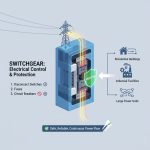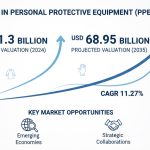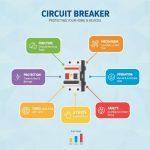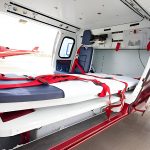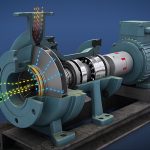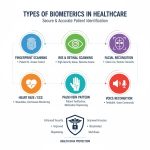Key Takeaways
- The global apheresis equipment market is projected to reach USD 5.35 billion by 2030, with a CAGR of 9.2% from 2024 to 2030.
- Growth is driven by the rising prevalence of chronic and blood-related diseases, and technological advancements in apheresis devices.
- North America leads the market, while Asia Pacific is the fastest-growing region.
- Disposable apheresis kits dominate the market, with neurology and hematology as key application areas.
- Leading companies focus on automation, digital health integration, and strategic partnerships.
- Challenges include high costs and limited access in low-resource settings, but opportunities abound in personalized medicine and healthcare infrastructure improvements.
- Recent developments include portable, automated devices, FDA clearances, and enhanced training initiatives.
Current Market Size and Forecast
The Global Apheresis Equipment Market is experiencing robust growth, reflecting the increasing demand for advanced blood component therapies and the rising burden of chronic diseases worldwide. According to Vantage Market Research, the market was valued at USD 2.01 million in 2023 and is expected to reach USD 2.20 million by 2032, growing at a CAGR of 3.7% between 2024 and 2032. However, broader industry analyses project the market to reach a much higher value of USD 5.35 billion by 2030, with a CAGR of 9.2% from 2024 to 2030. This significant growth trajectory is underpinned by several factors, including the increasing prevalence of conditions such as cancer, autoimmune disorders, and hematological diseases that require apheresis-based interventions.
Apheresis, a process that separates and removes specific components from blood, has become a cornerstone in the management of various medical conditions. The market’s expansion is further fueled by the growing adoption of apheresis procedures in both therapeutic and donor settings. Hospitals, blood banks, and research institutions are increasingly investing in advanced apheresis equipment to enhance patient outcomes and streamline blood component collection. The integration of automation and digital health technologies into apheresis devices is also contributing to market growth by improving procedure efficiency, safety, and traceability.
The forecasted growth is not only a reflection of rising demand but also of the industry’s response to evolving healthcare needs. As the global population ages and the incidence of chronic diseases rises, the need for safe, efficient, and accessible blood component therapies will continue to drive the apheresis equipment market forward. Additionally, the COVID-19 pandemic highlighted the importance of robust blood management systems, further accelerating investments in apheresis technologies.
Major Market Drivers
Several key drivers are propelling the apheresis equipment market’s expansion. Foremost among these is the rising incidence of blood-related disorders, including leukemia, lymphoma, sickle cell anemia, and autoimmune diseases. These conditions often necessitate the use of apheresis for both therapeutic and supportive care, such as plasma exchange, red cell exchange, and plateletpheresis. The growing awareness among healthcare professionals and patients about the benefits of apheresis-based treatments is also contributing to increased procedure volumes.
Technological advancements in apheresis equipment represent another major market driver. Modern devices are increasingly automated, user-friendly, and capable of performing complex procedures with greater precision and safety. Innovations such as membrane filtration, continuous flow centrifugation, and integrated digital monitoring systems have significantly improved the efficiency and effectiveness of apheresis procedures. These advancements not only enhance patient safety but also reduce procedure times and operational costs, making apheresis more accessible to a broader patient population.
The increased demand for blood component therapies, particularly in the context of chronic disease management and surgical interventions, is further fueling market growth. Blood banks and transfusion centers are under constant pressure to maintain adequate supplies of plasma, platelets, and other blood components. Apheresis equipment enables the targeted collection of these components, optimizing resource utilization and minimizing donor exposure. As healthcare systems worldwide strive to improve patient outcomes and reduce transfusion-related complications, the adoption of advanced apheresis technologies is expected to rise steadily.
Regional Market Insights
The apheresis equipment market exhibits distinct regional trends, with North America currently holding the largest market share. This dominance is attributed to the region’s well-established healthcare infrastructure, high prevalence of chronic and blood-related diseases, and strong presence of leading market players. The United States, in particular, has witnessed significant investments in blood management systems and apheresis technologies, driven by both public and private sector initiatives.
Europe also represents a significant market, characterized by robust healthcare systems, favorable reimbursement policies, and a growing focus on personalized medicine. Countries such as Germany, France, and the United Kingdom are at the forefront of adopting advanced apheresis equipment, supported by ongoing research and clinical trials in hematology and neurology.
Asia Pacific is projected to be the fastest-growing region in the coming years, fueled by rising healthcare expenditures, increasing awareness of apheresis therapies, and expanding access to advanced medical technologies. Rapid urbanization, a growing middle class, and government initiatives to improve healthcare infrastructure are driving demand for apheresis equipment in countries like China, India, and Japan. The region’s large patient population and unmet medical needs present significant growth opportunities for market players.
Latin America and the Middle East & Africa are also witnessing gradual market growth, supported by improving healthcare infrastructure and increasing investments in blood management systems. However, challenges such as limited access to advanced technologies and high costs remain barriers to widespread adoption in these regions.
Key Market Segments
The apheresis equipment market is segmented by product type, application, technology, and end-user. Disposable apheresis kits dominate the market, accounting for approximately 73% of the total share. These single-use kits are essential for ensuring patient safety, preventing cross-contamination, and streamlining workflow in both therapeutic and donor apheresis procedures. The recurring demand for disposable kits, driven by stringent infection control protocols, underpins their market dominance.
In terms of application, neurology and hematology are the leading segments. Apheresis is widely used in the management of neurological disorders such as multiple sclerosis, myasthenia gravis, and Guillain-Barré syndrome, as well as hematological conditions like leukemia, lymphoma, and sickle cell disease. The growing prevalence of these disorders, coupled with increasing clinical evidence supporting the efficacy of apheresis-based treatments, is driving segment growth.
Membrane filtration technology holds a significant share of the market, offering advantages such as selective component removal, reduced procedure times, and enhanced patient safety. This technology is particularly valuable in therapeutic plasma exchange and immunoadsorption procedures. Other technologies, including centrifugation and adsorption, also play important roles in specific clinical applications.
End-users of apheresis equipment include hospitals, blood banks, and research institutions. Hospitals represent the largest end-user segment, reflecting the high volume of therapeutic apheresis procedures performed in inpatient and outpatient settings. Blood banks and transfusion centers are key users of donor apheresis equipment, supporting the collection and supply of critical blood components.
Competitive Landscape
The apheresis equipment market is highly competitive, with several leading companies driving innovation and market expansion. Terumo Corporation and Haemonetics Corporation are among the most prominent players, known for their comprehensive product portfolios, global reach, and commitment to research and development. These companies are at the forefront of integrating automation and digital health solutions into their apheresis devices, enhancing procedure efficiency, data management, and patient safety.
Other notable players include Fresenius Kabi, Asahi Kasei Medical, and B. Braun Melsungen AG, each contributing to market growth through product innovation, strategic partnerships, and geographic expansion. The competitive landscape is characterized by frequent collaborations between device manufacturers, healthcare providers, and research institutions, aimed at developing next-generation apheresis technologies and expanding market access.
A key trend in the competitive landscape is the focus on automation and digital health integration. Companies are investing in smart apheresis devices equipped with real-time monitoring, data analytics, and remote connectivity features. These advancements not only improve clinical outcomes but also support healthcare providers in optimizing resource utilization and complying with regulatory requirements.
Strategic partnerships and mergers & acquisitions are common strategies employed by market players to strengthen their market position, expand product offerings, and enter new geographic markets. The competitive environment is expected to intensify as new entrants and emerging technologies reshape the apheresis equipment landscape.
Challenges and Opportunities
Despite its promising growth prospects, the apheresis equipment market faces several challenges. High costs associated with advanced apheresis devices and disposable kits can limit accessibility, particularly in low-resource settings and developing countries. The need for specialized training and skilled personnel to operate complex apheresis equipment also poses a barrier to widespread adoption.
Limited reimbursement policies and regulatory hurdles in certain regions further constrain market growth. Ensuring the safety and efficacy of apheresis procedures requires rigorous quality control and compliance with international standards, adding to operational complexities for healthcare providers.
However, these challenges also present significant opportunities for market players. Growing awareness of the benefits of apheresis therapies, coupled with ongoing improvements in healthcare infrastructure, is expanding market access in emerging economies. Government initiatives to strengthen blood management systems and increase funding for healthcare innovation are creating a favorable environment for market growth.
The potential for personalized medicine and innovative applications of apheresis is another key opportunity. Advances in genomics, immunology, and cell therapy are opening new avenues for the use of apheresis in targeted treatments, such as CAR-T cell therapy and regenerative medicine. Companies that invest in research and development to address unmet clinical needs and improve cost-effectiveness are well-positioned to capitalize on these opportunities.
Recent Developments in Apheresis
The apheresis equipment market has witnessed several notable developments in recent years, reflecting the industry’s commitment to innovation and improved patient care. One of the most significant trends is the emergence of portable and automated apheresis devices. These compact, user-friendly systems enable point-of-care procedures in a variety of settings, including remote and resource-limited environments. Portable devices are particularly valuable during emergencies, natural disasters, and mobile blood donation drives.
Regulatory agencies such as the U.S. Food and Drug Administration (FDA) have granted clearances for several new apheresis technologies, underscoring their safety and efficacy. These approvals facilitate the rapid adoption of advanced devices in clinical practice and support ongoing research into novel therapeutic applications.
Training initiatives aimed at enhancing operational skills and efficacy are also gaining traction. Manufacturers and healthcare organizations are investing in comprehensive training programs for clinicians, nurses, and technicians to ensure the safe and effective use of apheresis equipment. These initiatives are critical for maintaining high standards of patient care and optimizing clinical outcomes.
In summary, the apheresis equipment market is poised for significant growth, driven by technological innovation, rising demand for blood component therapies, and expanding access to advanced healthcare solutions. As the industry continues to evolve, ongoing investments in research, training, and infrastructure will be essential to overcoming challenges and unlocking new opportunities in this dynamic field.
FAQs
- What factors are driving the growth of the Apheresis Equipment Market?
- How is the Apheresis Equipment Market expected to perform through 2032?
- What technological advancements are influencing the Apheresis Equipment Market?
- What is the significance of the CAGR in understanding the Apheresis Equipment Market trends?
![[Market Research Reports] – Research Google News Blog | VMR.Biz](https://www.vmr.biz/wp-content/uploads/2022/12/logo-removebg-preview.png)

